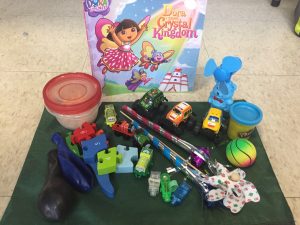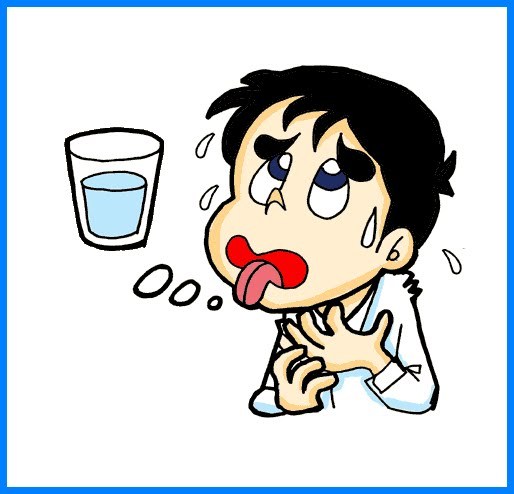If you could have an endless supply of one item – what would it be? Mine would be chocolate. I don’t think I could get sick of it. But there are other things I would get sick of in endless supply (satiation).
Most things that we love are so special because they have to be earned or we get them infrequently. If every day was the weekend, would we look forward to it anymore? Birthdays are so exciting because they only come once a year! As a mom, I love spending time with my kids but the weeks of time when they’re off from school are challenging! Everything in moderation.
 There’s a principle in ABA called satiation and deprivation. This means that we can have too much of a good thing and then that good thing won’t be preferred anymore. In implementing an ABA program, one of the first things we do is find out what the child’s favourite items are. Then, we can use those items as functional motivators to teach skills. This principle is called reinforcement – increasing the likelihood of a behaviour happening again in the future. In order for reinforcement to occur, the preferred items have to remain preferred so that we can offer them after we see the desired behaviour. But what if we offer something that the child doesn’t want? Then they won’t be motivated to work for it. Motivation is such a big part of increasing desired behaviours and we want to keep it high so that learning can happen.
There’s a principle in ABA called satiation and deprivation. This means that we can have too much of a good thing and then that good thing won’t be preferred anymore. In implementing an ABA program, one of the first things we do is find out what the child’s favourite items are. Then, we can use those items as functional motivators to teach skills. This principle is called reinforcement – increasing the likelihood of a behaviour happening again in the future. In order for reinforcement to occur, the preferred items have to remain preferred so that we can offer them after we see the desired behaviour. But what if we offer something that the child doesn’t want? Then they won’t be motivated to work for it. Motivation is such a big part of increasing desired behaviours and we want to keep it high so that learning can happen.
What is Satiation?
When we meet a new kiddo, we often bring a bag of new, fun toys that they hopefully have not seen yet. This allows the learner to let us be in their space and be motivated to let us teach them and use the new toys as reinforcement. Sometimes, parents will notice how much the child loves one of my toys that they’ll go out and buy it for him! Then, the next time I come, the child isn’t interested in my toys anymore because he gets it all the time and his motivation to work has gone way down. This is called satiation – when we have so much of a good thing that it doesn’t motivate us anymore and won’t be an effective reinforcer. For example, if the child is allowed to watch Paw Patrol whenever he wants, he’s not going to want to work with the therapist to “earn” a Paw Patrol video.
The principle of satiation is an important part of teaching language. Communication should be a goal first and foremost in any ABA program. We want to teach our kids the most functional way to access what they want – this could be with words, signs, pictures, or gestures. What we often do is hold the preferred item out of reach and wait for an appropriate request (depending on the skill level). For example, we might be teaching a student to say “buh” when he wants the ball. But if that student always gets given the ball just for reaching and grabbing for it, it will be hard to get him to do any more work to access the ball. However, if he ONLY gets the ball for saying “buh”, the ball will be more effective in reinforcing the appropriate behaviour.
What is Deprivation?
 We want the learner to be in a state of deprivation for that particular item so that it will be worth working for. Imagine you went for a jog and left your water bottle at home. Water then becomes way more valuable because you’re so thirsty (i.e., state of deprivation). You happen to have your credit card with you and you notice someone selling water on the corner for double the price. If you’re thirsty enough, you’d buy it. You would pay more for the same item if you really want it. Something what we often do when starting a toilet-training program is find out what the child’s most preferred food is and then hide it from them. So if the child LOVES Doritos, he will ONLY get given a Dorito for eliminating on the toilet. This helps the Dorito become reinforcement for eliminating on the toilet – it increases the likelihood of it happening again. Same with our learners – even if they normally wouldn’t show the behaviour on their own, if they are deprived of the reinforcer and really want it, we can get more out of them.
We want the learner to be in a state of deprivation for that particular item so that it will be worth working for. Imagine you went for a jog and left your water bottle at home. Water then becomes way more valuable because you’re so thirsty (i.e., state of deprivation). You happen to have your credit card with you and you notice someone selling water on the corner for double the price. If you’re thirsty enough, you’d buy it. You would pay more for the same item if you really want it. Something what we often do when starting a toilet-training program is find out what the child’s most preferred food is and then hide it from them. So if the child LOVES Doritos, he will ONLY get given a Dorito for eliminating on the toilet. This helps the Dorito become reinforcement for eliminating on the toilet – it increases the likelihood of it happening again. Same with our learners – even if they normally wouldn’t show the behaviour on their own, if they are deprived of the reinforcer and really want it, we can get more out of them.
Satiation/Deprivation is a constant balance between giving the child enough of an item that they like it but not too much of it that they’re sick of it. Preference assessments are a great tool to use to keep on top of what the most current preferences are. These can be done as simply as asking “what do you want to work for?” when starting a new token board. Or, for a child who is non-verbal, you can hold up 2 items, see which one they reach for and then have them work for it. Parents can and should have input into what a child’s preferences are and what they are comfortable using as reinforcement. Communicate with parents to know what they are able to “save” from the child for therapy time. Realistically, parents need to be able to give their kids their favourite things outside of session but discuss which ones can be saved and not given. So if parents want to be able to let their kids use the iPad whenever they want, this may not be a good choice for a reinforcer!



Thank you for all of your resources! They are greatly appreciated.
I find great tools that I can use with the families I work with. Always something
new! Great work!
Thank you!
Pingback: Parent Training - How to ABA